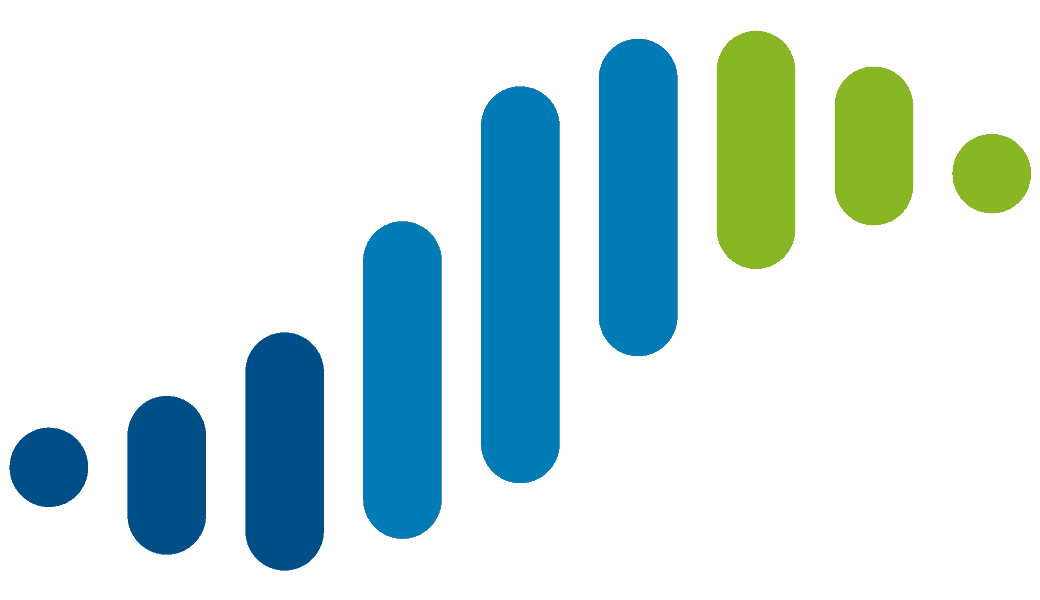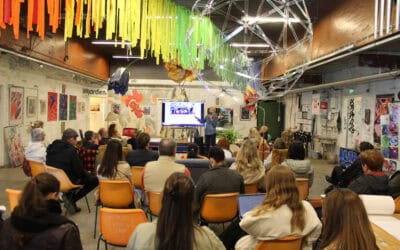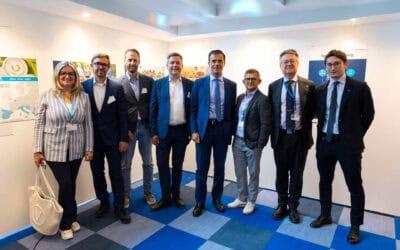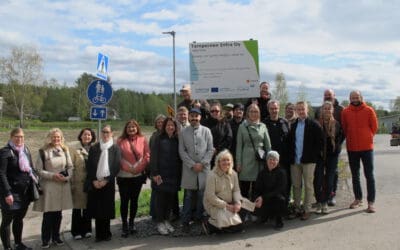One of the last wild rivers of Europe, the Neman is rich in picturesque meanders, framed by irregular banks. Teeming with life and activity, the 937 km long waterway, considered by the Lithuanians as the “father of rivers” and mentioned in old poems and folk songs, it starts its flow near Minsk and works its way up to the Baltic Sea, where it drains to the Curonian Lagoon. It also plays a centerpiece role in the initiative spearheaded by the Lithuanian Inland Waterway Authority (LIWA) and the Klaipeda Science and Technology Park (KTSP) as part of the Blue Supply Chains (BSC) project.
The story began with the Emma Project, an initiative under the Baltic Sea Region cooperation program (2014–2020). The goal was clear: to revive inland waterways and develop river transport to create new transport mode services. The first step was to pilot this vision in Lithuania through the LIWA commercial project.
But the task at hand was and remains vast in scope. This pilot project is not just a testbed for modern technologies but also a source of valuable insights for the entire EU and the Baltic Sea Region. With electricity (and we will get to that in a second) playing a key role, questions such as the optimal distribution of charging points, specifications of charging stations, and current, real-world data on energy consumption in various conditions need to be answered. And the Lithuanian team is more than ready to get it done.
So… how does electricity fit into all of this, exactly?
One of the core parts of the project is turning the stretch of the Neman River connecting the Port of Klaipeda and Kaunas into the first emission free inland waterway in Europe. Yes, you heard that right, not just Lithuania, not just Eastern Europe. Europe. Full stop.
The Lithuanian modus operandi when it comes to the electrification of inland waterways reflects the transformative approach to greening transport in general. The main premise is rather brilliant and (in some aspects, as there are always obstacles to overcome) deceptively easy. It focuses on replacing diesel-powered river transport with electric pushboats, supported by extensive infrastructure modernization along the Neman River.
Design for the pushboat is already finished and tailored to the unique challenges posed by Lithuania’s inland waterways. Its key features are centred around adaptability to changing navigational conditions, market viability (not a standalone vanity initiative – a total of six pushboats will be supported), economic feasibility (backed by a government-supported service model), as well as the environmental and societal impact (a reduction in road freight of up to 48,830 truckloads annually, cutting 21 tonnes of CO2 per trip).
A great design is just one piece of the puzzle
As you can probably guess, you cannot simply build a brand new, state of the art, electric pushboat, then, pardon the pun, push it onto the water, and expect everything to magically work. There are numerous challenges involved but one of them rises above the rest – infrastructure.
Currently, the available shore power infrastructure (i.e. systems located along the river, allowing the vessel to recharge its batteries) does not meet the operational demands of electric pushboats. To remedy this situation, the clever cogs at LIWA came up with a dual-connection system, increasing the capacity.
Upgraded charging stations are being developed at three key locations along the waterway:
- Klaipėda Port – a primary charging hub that will also support multi-modal logistics
- Jurbarkas – a mid-route charging and battery exchange point to extend vessel range
- Kaunas Marvele Port – which will function as a multi-purpose energy hub, supplying power not only to vessels but also to heavy-duty electric trucks and other transport systems
But that is not all! At the same time, KTSP is making significant strides by developing a modular propulsion system, potentially revolutionizing the concept of emission-free inland water vessels. This system is designed to be universal, adaptable to any vessel within the EU and potentially beyond, and capable of utilizing various power sources, including batteries or alternative fuels like hydrogen or ammonia.
The information above is just scratching the surface. You can read a more in-depth summary, filled with technical details related to the design and challenges the teams have overcome, in a dedicated section on the BSC website.






